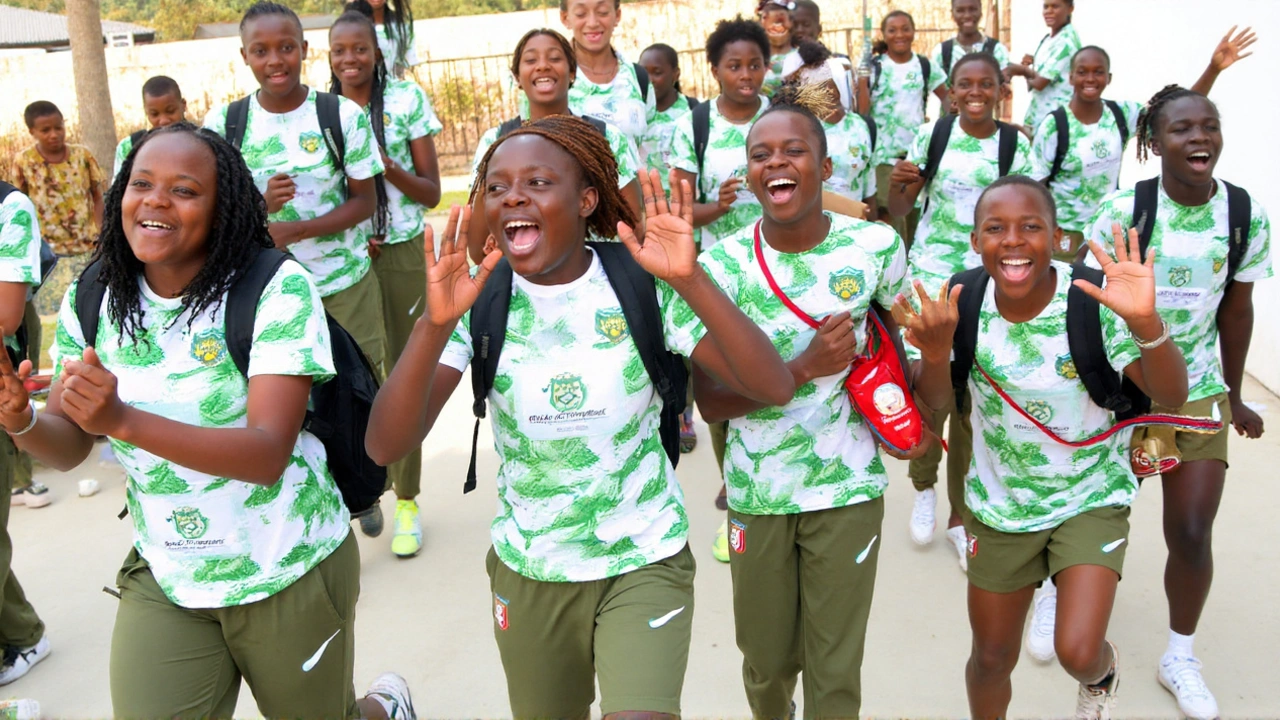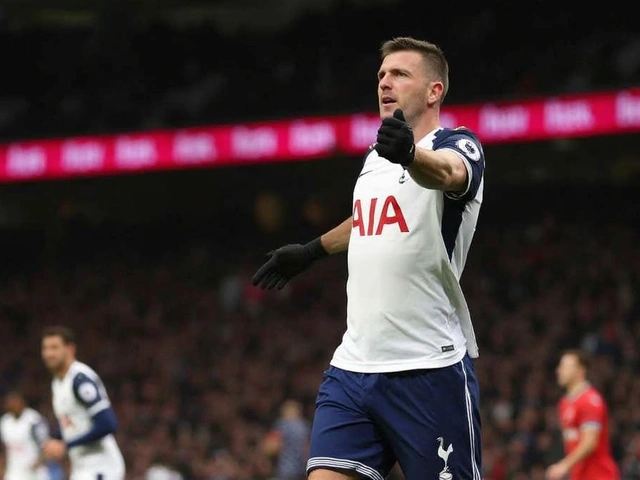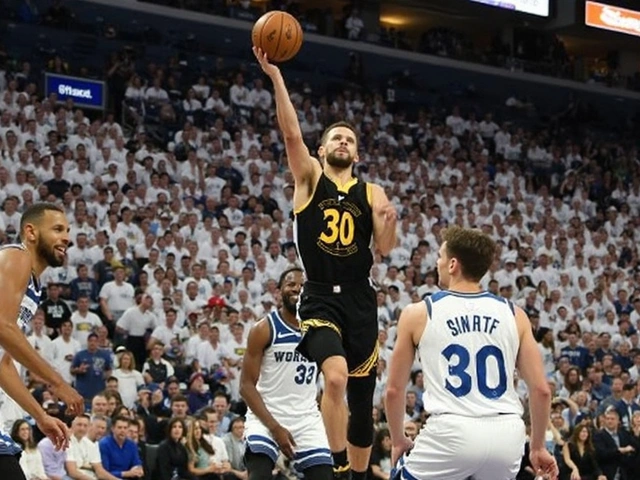This is the year the youth game gets bigger, louder, and more global. The FIFA U-17 Women's World Cup is expanding to 24 teams for the first time, and Morocco becomes the first African nation to host it. Samoa, from Oceania, will play their first-ever FIFA tournament. It’s all set from October 17 to November 8, 2025, across venues that include the Stade Olympique de Rabat and the Mohammed VI Football Academy in Salé.
The build-up has been a marathon of qualifiers across every confederation. Some routes were straightforward, others messy and cruel. But the headline is clear: more teams, more pathways, more minutes for young players who are desperate to be seen on the biggest stage. And Morocco isn’t just staging one event—the country will host five straight editions of this age group, a long run designed to supercharge the women’s game across Africa and the Arab world as it gears up for co-hosting duties at the 2030 men’s World Cup.
How the qualifiers unfolded
CONCACAF tore up the old playbook and rolled out a larger qualifying ladder. Round One featured 22 teams between January 27 and February 1, 2025. The Final Round ran in Trinidad & Tobago from March 31 to April 6 with 12 teams split into three groups. The confederation had four World Cup berths: the three group winners and the best second-place finisher.
Final Round groups looked like this:
- Group A: Mexico, Haiti, Costa Rica, Bermuda
- Group B: Canada, Puerto Rico, Panama, Nicaragua
- Group C: United States, El Salvador, Honduras, Trinidad and Tobago
The United States didn’t just qualify—they put down a marker. Three games, three wins, nine points, and a 17-0 goal difference. They closed Group C with a 7-0 win over El Salvador on April 5. The shot count across their three matches? 103-14. Forwards Micayla Johnson and Ashlyn Anderson each scored four, with Anderson leading the way in goal contributions at seven. This is the USA’s seventh qualification and their fifth in a row, and it comes with history: they’ve been CONCACAF’s standard-setter, lifting titles in 2008, 2012, 2016, 2018, 2022, and 2024.
Mexico also booked their ticket out of the region. The bigger story, though, is the depth behind the usual heavyweights. The new format forced more meaningful games for mid-tier teams and gave rising programs a chance to play their way into relevance. For teenage players, that volume matters—more minutes against different styles, more chances to adapt under pressure, and a clearer line to professional pathways.
In Africa, the picture is bold and varied. Host nation Morocco leads the continent’s contingent, joined by Nigeria, Cameroon, Zambia, and debutants Ivory Coast. Nigeria are back for an eighth appearance—a sign of a reliable production line that keeps turning raw talent into tournament regulars. Cameroon and Zambia return for their third shots after previous runs in 2014, 2016, 2018, and 2024 cycles. Ivory Coast’s debut adds fresh intrigue, especially against opponents who won’t have a long scouting file on them.
Over in Asia, China PR and Japan are locked in and bring known strengths: structure, speed, and discipline. Japan, in particular, has a clear identity at youth level—comfortable on the ball, relentless out of possession. For the rest of the field, that tactical precision is a headache no one wants in a group draw.
Oceania brings a new face with Samoa, a breakthrough that signals broader investment and belief in the women’s game across the Pacific islands. This is not a token entry. It’s the product of years of work on coaching, competition, and youth development in a region that has long fought for meaningful continuity between tournaments.
As it stands, nine nations have their places confirmed: Morocco (hosts), USA, Mexico, China PR, Japan, Ivory Coast, Cameroon, Nigeria, and Zambia. The remaining slots will come through as other confederations finish their pathways and confirm their berths, rounding out the expanded 24-team field.
Format, draw, and why Morocco 2025 matters
The draw took place in Rabat on June 4, 2025, with seeding based on results from the last five editions of the tournament. Teams were placed into six pots and then drawn into six groups. With 24 sides, expect a group stage of six groups of four and then an expanded knockout bracket—more games, more variety, and more opportunities for late-blooming teams to grow into the event.
On the ground, Morocco’s plan is about more than a one-off spectacle. The country’s stadium upgrades and training facilities—including the Mohammed VI complex—give the players what they need: good pitches, consistent surfaces, and professional-standard recovery spaces. That consistency matters in youth football, where uneven conditions can widen the gap between the haves and the have-nots.
Hosting five straight editions is a long bet on continuity. It means the same operational teams getting sharper year after year. It means local referees, medics, and volunteers gaining real tournament experience. And it means a reliable platform for African federations to bring through more U-17 cycles without fearing that conditions will change wildly from one event to the next.
There are storylines everywhere. Can the USA translate regional dominance into another deep run against Asia’s precision and Africa’s physicality and flair? How will Mexico’s emerging prospects handle the jump in tempo against teams from Japan and Nigeria? What does Ivory Coast’s debut say about West Africa’s development pipeline, and how will they manage tournament nerves? And then there’s Samoa, carrying the flag for Oceania outside the traditional powerhouse shadow and stepping into completely new terrain.
For players, the stakes are personal. This is where teenagers become names, where academy prospects turn into national-team locks. A strong tournament here can change a career in 90 minutes—opening doors to scholarships, club contracts, and senior call-ups. The expanded field means more dressing rooms hearing the national anthem for the first time, and more young athletes believing this level is not out of reach.
What should fans expect? High-energy football, fast transitions, and the kind of risk-taking that only youth tournaments deliver. The group stage will throw together teams who rarely meet, and that randomness is half the fun. It’s also where smart coaching counts—set-piece routines, pressing triggers, and quick in-game adjustments decide a lot of these games, especially when nerves are high and margins are thin.
The calendar is tight, but the setup should keep the rhythm steady. The expanded format gives coaches room to rotate, protect legs, and manage form. Depth will matter as much as stars. Teams that bring impact subs and tactical flexibility—switching shapes without losing coherence—tend to ride out the grind of tournament football.
And then there’s the home factor. Morocco has leaned into the role, using the moment to supercharge participation in girls’ football and to put national infrastructure to work in front of packed stands. Expect noise, color, and a lot of curiosity from neutral fans. For a youth tournament, that atmosphere can feel massive—an energy boost or a test of nerve, depending on the team.
Keep an eye on a few themes as the final field fills out: the balance of power between Asia and North America, Africa’s depth behind Nigeria, and how debutants cope with their first three-game sprint on a world stage. Also watch how teams manage set pieces. In tight matches at this age level, corners and free-kicks swing entire campaigns.
The cast is still coming together, but the outline is set. A bigger field. A first-time African host. A debut for Samoa. A draw that has already set the tone. And a clear message from world football’s leaders: this age group isn’t an afterthought anymore. It’s the launchpad.







Posts Comments
Rohit Raina September 7, 2025 AT 04:49
They say expansion means opportunity, but let’s be real-24 teams just means more teams getting slaughtered 7-0 by the USA. This isn’t development, it’s a showcase for the same old powerhouses with extra padding. Africa’s hosting? Cool. But unless the infrastructure is actually used post-tournament, it’s just a photo op with better lighting.
Prasad Dhumane September 8, 2025 AT 03:01
There’s something quietly beautiful about Samoa stepping onto this stage. No giant clubs, no youth academies with satellite campuses in Europe-just pure heart, local coaches, and kids who’ve never left their island but now carry its name on a global stage. That’s the soul of football. The USA’s 17-0 wins? Impressive. But the real victory is in the quiet moments: a girl in Apia, watching the draw, thinking, ‘Maybe one day.’ That’s the ripple effect this tournament needs to nurture.
rajesh gorai September 9, 2025 AT 18:05
The ontological shift here is non-trivial. The U-17 WWC isn’t just a tournament-it’s a hegemonic apparatus of soft power, reterritorializing youth development under FIFA’s neocolonial logics. Morocco’s hosting? A performative decolonization. The Mohammed VI Academy? A technocratic panopticon disguised as infrastructure. The real question isn’t who wins-it’s whether the girls are being commodified as human capital or liberated as agents. And let’s not forget: set pieces are the last bastion of pre-modern tactics in a post-positivist game. 8-)
Rampravesh Singh September 10, 2025 AT 22:13
This is a monumental milestone for women’s football on a global scale. The commitment from Morocco to host five consecutive tournaments demonstrates extraordinary vision, leadership, and dedication to the future of the sport. We must recognize the tireless efforts of federations, coaches, volunteers, and most importantly, the young athletes who are breaking barriers every day. This is not just football-it is transformation.
Akul Saini September 11, 2025 AT 10:33
The structural implications of expanding to 24 teams are underdiscussed. More slots mean more data points for scouting networks, which accelerates the professionalization of youth pathways. But the real variable is psychological load-how do you prepare a 16-year-old from Ivory Coast to face Japan’s tactical discipline after only playing in regional qualifiers? The quality of opposition matters more than the quantity of games. Also, set pieces are statistically decisive in 68% of knockout-stage matches at this level, per FIFA’s 2024 youth analytics report. That’s not luck. That’s coaching.
Arvind Singh Chauhan September 11, 2025 AT 21:15
They always say it’s about the girls… but who’s really benefiting? The federations get their PR wins. The sponsors get their logos on jerseys. The stadiums get built, then sit empty. And the girls? They get a few months of hype, then vanish back into systems that don’t fund their training, don’t pay their coaches, and don’t even give them decent boots. Morocco’s hosting is beautiful. But until the same investment flows into the grassroots back home, it’s just a very expensive mirage.
AAMITESH BANERJEE September 12, 2025 AT 15:20
Honestly, I think the real win here is the fact that people are even talking about this. A few years ago, you wouldn’t find a single article about U-17 women’s qualifiers outside of a niche blog. Now we’ve got breakdowns of group stages, stats on shot counts, and debates about set-piece efficiency. That’s progress. I don’t care if the USA wins again-what matters is that a kid in rural Zambia or Samoa now knows this exists, and that someone, somewhere, is watching. That’s the foundation. Everything else? That’s just the noise.
Write a comment